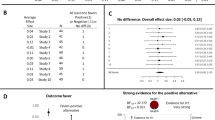Conclusion
The number of errors in the recognition of unfamiliar phonemic contrasts increases with high or low frequency limitation. This increase in errors is not the same for all phonemic contrasts, but the contrasts are affected in the same manner by either limitation. Consonants are affected more, and German shows a much clearer picture than does French. Rank ordering contrasts according to numbers of errors give support to a concept of“order of difficulty” of recognition of foreign phonemic contrasts.
Similar content being viewed by others
Reference
Buka, M.; Freeman, M. Z.; and Locke, W. N. “Language Learning and Frequency Response.”International Journal of American Linguistics (Part II) 28: 62–79; January 1962.
Author information
Authors and Affiliations
Rights and permissions
About this article
Cite this article
Freeman, M.Z., Buka, M. Effect of frequency response on language learning. AVCR 13, 289–295 (1965). https://doi.org/10.1007/BF02768480
Issue Date:
DOI: https://doi.org/10.1007/BF02768480




